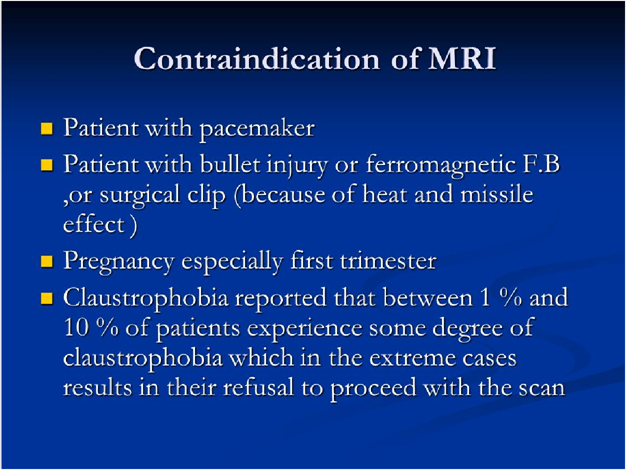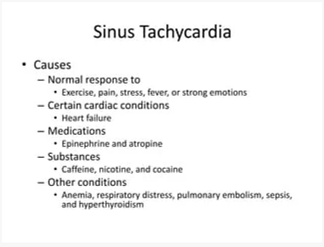The nurse is screening a client prior to an magnetic resonance imaging (MRI). What information is important to report to the health care provider before the MRI?
The client has a permanent cardiac pacemaker
The client has a history of atherosclerosis.
The client took the prescribed heart medications today
The client has an allergy to shellfish.
The Correct Answer is A
Having a permanent cardiac pacemaker is a significant factor that needs to be communicated to the health care provider before undergoing an MRI. Magnetic resonance imaging (MRI) uses powerful magnets, radio waves, and a computer to create detailed images of the body. The presence of a cardiac pacemaker can be a contraindication for undergoing an MRI because the strong magnetic field can potentially interfere with the functioning of the pacemaker or cause it to malfunction. It is crucial to assess the compatibility of the pacemaker with the MRI machine and to take appropriate precautions or make necessary arrangements to ensure the safety of the client during the procedure.

While the other pieces of information provided may be relevant to the client's overall health and medical history, they may not have a direct impact on the safety or feasibility of undergoing an MRI.
Nursing Test Bank
Naxlex Comprehensive Predictor Exams
Related Questions
Correct Answer is A
Explanation
Elevated levels of LDL (low-density lipoprotein) cholesterol are associated with an increased risk of coronary artery disease (CAD). LDL cholesterol is often referred to as "bad" cholesterol because it can contribute to the formation of plaque in the arteries, leading to narrowing and blockage of the arteries supplying the heart. This increases the risk of developing CAD and related complications such as heart attack and stroke.
On the other hand, HDL (high-density lipoprotein) cholesterol is often referred to as "good" cholesterol. HDL cholesterol helps remove excess cholesterol from the bloodstream and transport it back to the liver for processing and excretion. Higher levels of HDL cholesterol are associated with a decreased risk of CAD because it helps to prevent the accumulation of cholesterol on artery walls.
Therefore, understanding that increased LDL and decreased HDL levels increase the risk of coronary artery disease demonstrates a good understanding of the significance of cholesterol levels and their impact on cardiovascular health.
Correct Answer is ["B","C","D","E"]
Explanation
Pain level of 10 out of 10: Severe pain can stimulate the sympathetic nervous system and result in an increased heart rate.
Temperature 101.9°F: Fever can lead to an elevated heart rate as the body's response to infection or inflammation.
Hemoglobin: 7 g/dL: Low hemoglobin levels, known as anemia, can cause the heart to pump faster in an attempt to compensate for the decreased oxygen-carrying capacity of the blood.
Cocaine abuse: Cocaine is a stimulant drug that can significantly increase heart rate and cause tachycardia.
The following clinical finding would not typically be associated with tachycardia:
Blood glucose 90 mg/dL: While low or high blood glucose levels can cause symptoms, they are not directly associated with tachycardia unless they lead to significant physiological stress or hormonal imbalances.

Whether you are a student looking to ace your exams or a practicing nurse seeking to enhance your expertise , our nursing education contents will empower you with the confidence and competence to make a difference in the lives of patients and become a respected leader in the healthcare field.
Visit Naxlex, invest in your future and unlock endless possibilities with our unparalleled nursing education contents today
Report Wrong Answer on the Current Question
Do you disagree with the answer? If yes, what is your expected answer? Explain.
Kindly be descriptive with the issue you are facing.
